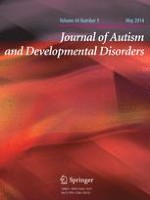01-05-2014 | Original Paper
Comprehensive Comparison of Self-administered Questionnaires for Measuring Quantitative Autistic Traits in Adults
Gepubliceerd in: Journal of Autism and Developmental Disorders | Uitgave 5/2014
Log in om toegang te krijgenAbstract
We comprehensively compared all available questionnaires for measuring quantitative autistic traits (QATs) in terms of reliability and construct validity in 3,147 non-clinical and 60 clinical subjects with normal intelligence. We examined four full-length forms, the Subthreshold Autism Trait Questionnaire (SATQ), the Broader Autism Phenotype Questionnaire, the Social Responsiveness Scale2-Adult Self report (SRS2-AS), and the Autism-Spectrum Quotient (AQ). The SRS2-AS and the AQ each had several short forms that we also examined, bringing the total to 11 forms. Though all QAT questionnaires showed acceptable levels of test–retest reliability, the AQ and SRS2-AS, including their short forms, exhibited poor internal consistency and discriminant validity, respectively. The SATQ excelled in terms of classical test theory and due to its short length.
